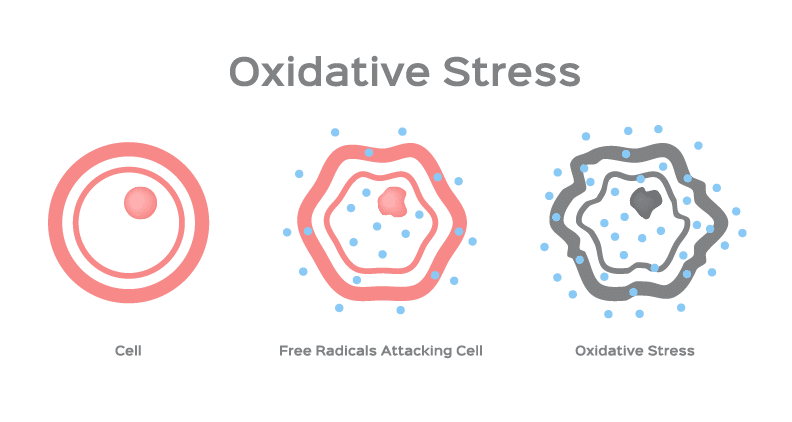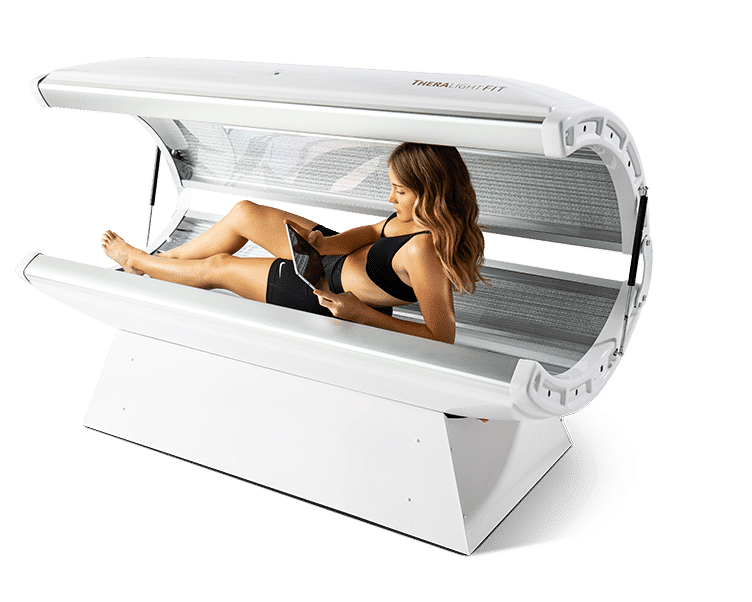Light for a Healthier Life
A Breakthrough in Full Body Photobiomodulation
The Problem with Oxidative Stress
Boost energy, improve skin quality, and fight oxidative stress with our Advanced Photobiomodulation System.

Oxidative stress is an imbalance between free radicals and antioxidants. Both of these molecules are necessary for normal, healthy reactions in the body, but an excess of either can cause damage.
Free radicals are molecules which contain oxygen and have an uneven number of electrons. Because free radicals have an uneven number of electrons, they’re unstable and highly reactive with other molecules, which helps them cause large chain chemical reactions in the body. On the other hand, antioxidants are molecules that can give up an electron without becoming unstable, so they have the ability to stabilize free radicals.
When there are more free radicals than antioxidants can manage, oxidative stress occurs. Because free radicals are highly reactive, they cause damage to the body’s proteins, fatty tissue, and DNA in their quest for that stabilizing electron. Damage by free radicals can affect cellular function and cause apoptosis, also referred to as programmed cell death.
While our bodies’ cells regularly die and get replaced, prolonged damage by oxidative stress has been linked to a variety of diseases such as diabetes, cancer, inflammatory conditions, and neurodegenerative diseases like Parkinson’s and Alzheimers. Oxidative stress also contributes to the aging process and can affect skin’s collagen production and elasticity, causing wrinkles.
Causes of Oxidative Stress
But how does a surplus of free radicals occur? Everyone’s body naturally produces some free radicals, but everybody needs some free radicals in order to be healthy and help fight off infections. An excess of free radicals, and therefore a potential for lasting damage, can be a result of several environmental factors, like pollution, ozone, radiation, certain chemicals and pesticides, and cigarette smoke (including second-hand smoke).
Dietary factors can also play a role in excess free radicals. Diets high in fat, sugar, and alcohol can impact free radical production, and diets containing foods rich in antioxidants, like berries and dark, leafy greens, can introduce antioxidants to help manage free radicals.
How Red Light Therapy Fights Oxidative Stress
While altering our diets can help manage free radicals, sometimes there are factors outside of our control influencing reactive oxygen species in our bodies. Pollution, radiation, and even exposure to cigarette smoke can be inescapable depending on a person’s location or situation. One option to aid in the fight against oxidative stress is red and near-infrared light therapy.
Red light, at specific wavelengths, is readily absorbed by chromophores in the mitochondria of the body’s cells, which activates metabolic energy processes. Red and near-infrared wavelengths of light promote ATP production, which boosts energy transport within cells, leading to increased cell proliferation.
What makes red light different from other forms of light is its ability to penetrate deeper into the skin. While blue and ultraviolet light mainly affects the upper layers of skin, red light can be absorbed by cells deep in the body. Red light therapy is also referred to as photobiomodulation therapy because of the change in the body induced by light, and there are a variety of devices with different capacities of utilizing red light, including red light bed, panels, and targeted deep tissue laser therapy systems.
See Results from Day One

The key to achieving results with red light therapy is accurate dosage, this is a combination of wavelength and exposure time. Different wavelengths are more readily absorbed by different tissues in the body, so it’s important to select the wavelength that is appropriate for an individual’s concerns and goals. Additionally, exposure time should be incremental and consistent. For example, an individual session in the TheraLight Full Body Photobiomodulation System shouldn’t exceed 20 minutes, but sessions should be scheduled every other day, at least in the beginning weeks, to achieve complete results. When the correct dosage is achieved, Photobiomodulation therapy has a positive impact.
Photobiomodulation can be used to manage a variety of conditions, such as:
- Arthritis
- Nerve pain and nerve regeneration
- Tendinopathies
- Soft tissue healing
- Anxiety and depression
- Improved skin appearance and elasticity
- Improved muscle performance and recovery
